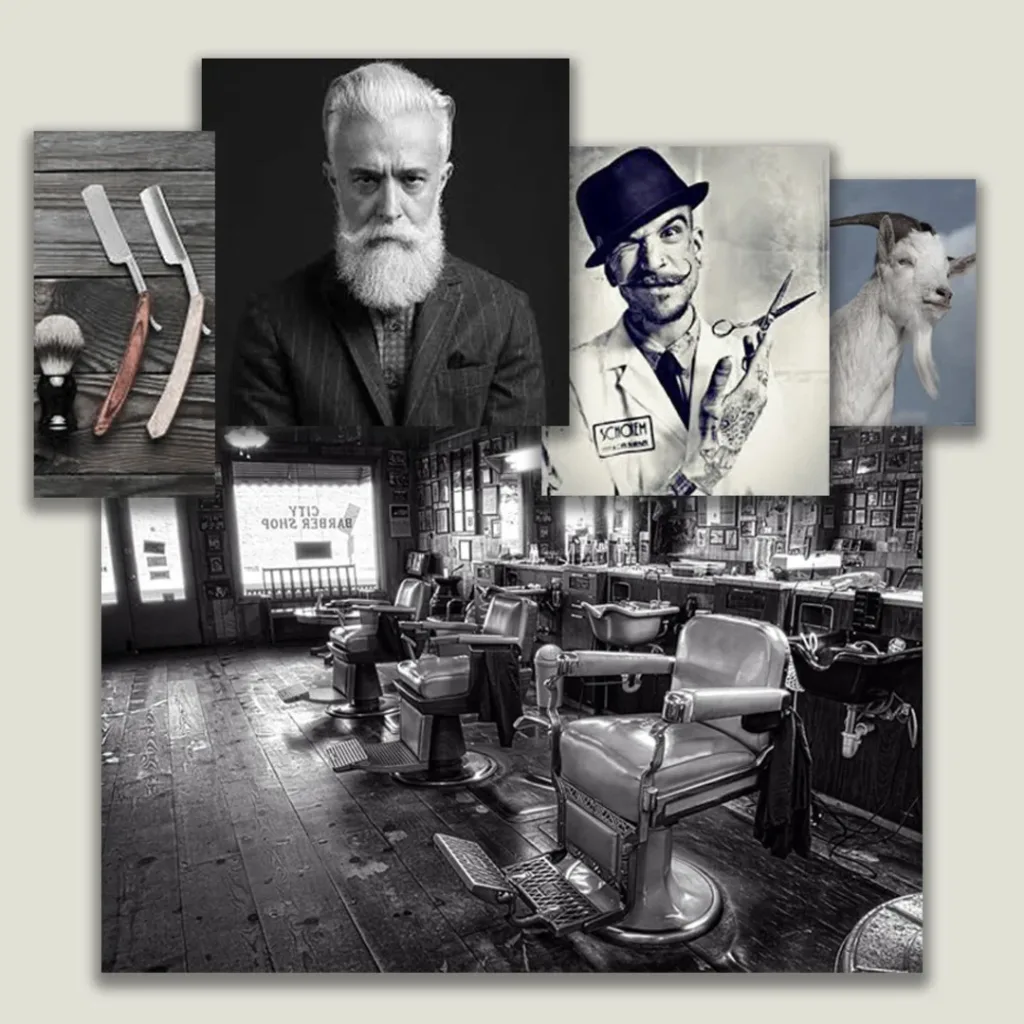Mood Boards: The Secret Weapon for Building Better Brands
Visual communication plays a critical role in branding. Brands aim to convey their identities and values through logos, colour palettes, fonts, imagery, and other visual elements. Mood boards are essential for bringing these visible components together to tell a cohesive brand story.
Brands use mood boards in the branding and marketing process for several key reasons:
To Clearly Communicate the Vision
Mood boards provide a shared understanding across teams and stakeholders of what the brand identity aims to achieve. Rather than relying solely on verbal descriptions, mood boards give crystal clear visual communication.
To Inspire Creativity
Mood boards spark creative ideas for visual components like logos, branding, websites, products, photography, and more. The assemblage of imagery and textures gets creative juices flowing.
To Maintain Consistency
Well-crafted mood boards ensure consistency across brand applications- packaging, advertising, environments, products, and experiences.
To Aid Decision Making
When faced with creative choices, mood boards help evaluators determine if a design aligns with the intended look and feel of the brand.
In summary, mood boards are invaluable tools for building and managing brands by capturing the ethos, galvanising teams, unlocking creativity, and guiding decisions.
Table of Contents
The Origin Story: How the Humble Mood Board Came to Rule Branding

Mood boards grew organically out of creative workflows, but when did they become essential in branding processes? Let's explore the history.
Birth of the Mood Board
Interior designers and fashion stylists pioneered mood boards in the 1960s and 70s to communicate ideas for spaces and outfits. Images were hand-torn from magazines and pinned to presentation boards – an analogue approach.
Digital Transformation
The internet, graphic design software and new collaborative tools allowed remote teams to create mood boards digitally. Pinterest, Milanote, and Mural brought mood boards into the digital age.
Growth of the Branding Industry
As more brands recognised the monetary value of connecting emotionally with consumers, rigorous branding became vital. Mood boards stepped up to meet the need for clarity and consistency.
So, mood boards smoothly transitioned from a humble beginning in design to an undisputed branding necessity. But why are they so remarkably suited to contemporary branding challenges?
Why Mood Boards Thrive in Modern Branding
Several conditions make mood boards invaluable for brands operating today:
- More Crowded Market – Cutting through noise with a distinct identity is crucial
- Remote Teams – Visual tools align distributed groups spanning locations
- Fast Iteration – Quick flexibility to pivot brand identities
- Visual Culture – Imagery communicates faster than words
- Emotional Connections – Brands must move consumers now more than ever
For these reasons, brands cannot afford not to invest in mood boards if they want to flourish. When implemented correctly, they yield tremendous value.
However, creating effective mood boards takes skill and practice. Next, let's break down the methodology.
Crafting Killer Mood Boards: The Step-By-Step Process

Building mood boards is both art and science. Follow these steps to create mood boards that genuinely capture a brand:
Get Organised First
Before the creative begins, some structure helps. Outline topics, team members' responsibilities, assets needed, and project plan.
Conduct Research
Gather images, colour palettes, fonts, and textures relevant to the brand and its competitors. The analysis yields insights.
Define Adjectives
List exact adjectives describing the emotions and aesthetics the brand should evoke. More than just “fun” – get descriptive with nuanced feelings.
Start Assembling
Drag images and text to the board. Don't think too hard yet about composition. Gather possibilities first.
Refine the Storyline
Arrange elements to tell a straightforward story of the brand identity. Maintain alignment with the adjective list.
Simplify Ruthlessly
Once the storyline is evident, cut any element that isn't vital to conveying the identity. Every asset must earn its place.
Make it Immersive
Use scale, proximity, stacks, and depth to envelop viewers. Transport them into the branded world.
Leave White Space
Negative space lets the critical elements shine. Breathe; don't overstuff the frame.
When executed skillfully, this process yields professional-grade mood boards. But brands often stumble in avoiding common pitfalls.
Top 10 Mood Board Mistakes That Muddle Brand Identities
Many brands undermine their messaging by making these frequent mood board flubs:
- Too Broad – Lacking specificity on feelings
- Overcomplicated – Trying to do too much; lack of focus
- Into the Weeds – Details instead of big picture emotion
- Warped POV – Not aligning with target consumers' reality
- Off Target – Disconnected from the brand's offerings
- Inconsistency – Conflicting and mismatching elements
- Indecision – Unable or unwilling to make clear choices
- Uninspiring – Fails to spark excitement and motivation
- Lifeless – No energy, movement or depth
- Created in Siloes – Lack of cross-functional collaboration
Avoiding these pitfalls takes diligence – but pays dividends in the form of clarity for creatives and unity across teams.
That covers the fundamental principles of mood board creation. Now, let's spotlight some brands using them effectively.
Case Studies: 4 Brands Thriving with Mood Boards
Mood boards have a significant influence on these brands:
1. Madewell
This retro-inspired fashion label evokes 1970s free-spirits. Their mood boards use sun-drenched imagery, vintage textures, and nostalgic typography.

Key Adjectives: Nostalgic, Adventurous, Optimistic
2. Charcoal Goods
Rugged grooming products inspired by old-school barbershops. Charcoal's mood boards feature weathered elements, bold textures, and a timeless masculine style.

Key Adjectives: Gritty, Sturdy, Heritage
3. Lululemon
Athletic apparel promoting mindfulness and movement. Lululemon's mood boards contain nature photos promoting vitality and focus. Their colour palette aligns with soothing chakras.

Key Adjectives: Energising, Purifying, Centred
4. Jones Soda Co.
Quirky soda brand with user-submitted photos printed on labels. Their irreverent mood boards have randomness and imperfections to echo their unconventional identity.

Key Adjectives: Silly, Playful, Community
Mood boards paved the way for logos, ads, stores, products, and websites for each brand that stay recognisable, distinct, and consistent across touchpoints.
But mood boards need not be static. Brands should evolve boards as new trends and tools emerge.
The Future: How Mood Boards Stay on the Cutting Edge
Innovations in aesthetics, emotions measurement, and tech promise to take mood boards into an exciting future:
- More Inclusive Representations
- Mainstream Multisensory Boards
- Dynamic Responsiveness
- Emotion Analysis Integration
- 3D / AR / VR Capabilities
Let's explore what each advancement means for brands.
More Inclusive Representations
With society embracing more comprehensive definitions of beauty and rejecting stereotypes, mood boards can lead by showcasing diversity in ethnicity, age, ability, gender identity and body types represented. This acceptance connects with consumers.
Mainstream Multisensory Boards
Emerging tools allow mood boards to convey sounds, scents, and textures beyond visuals. Multisensory mood boards ensure tactile alignment as more consumers interact with websites via touchpads.
Dynamic Responsiveness
Smart mood boards with sensors and algorithms can shift imagery and lighting based on viewers' responses for more personal and immersive experiences.
Emotion Analysis Integration
Sentiment analysis through AI and biometric data may allow brands to quantify if a mood board elicits intended reactions. This enables data-driven refinement.
3D / AR / VR Capabilities
Following generation mood boards could have virtual and augmented reality functionality for bringing environments to life. 3D enhances spatial feel. As virtual worlds grow more engaging, brands need to keep pace.
By harnessing cutting-edge capabilities while crafting inclusive representations, mood boards continue effectively building brands through connections.
Key Takeaways and Ideas to Remember
If one thing's clear, mood boards should play an integral, exciting role in any brand's strategy. To recap critical learnings:
Mood boards are essential for building brands through emotional connections and precise aesthetic alignment. But missteps can muddy messaging. By avoiding common pitfalls and harnessing the latest innovative capabilities, brands can keep their mood boards cutting-edge.
Looking ahead, society's increasing acceptance of broader representations allows mood boards to promote inclusivity through diverse images. Dynamic mood boards with embedded sensors and algorithms will allow for responsiveness to biometric feedback, ensuring messaging resonates emotionally. And 3D/AR/VR advancements pave the way for more immersive branded environments.
While mood boards began analogue, today’s digitally-powered iterations allow for sophisticated conveyance of brand identities – quantifiable through emotion analysis AI. Far from static documents, tomorrow’s mood boards will evolve at the forefront of dynamic, multidimensional brand building.
But no matter the technology, the core principles remain unchanged. Clear adjective definitions. Ruthless simplification. Negative space for elements to shine. And above all, crystalline communication of brand ethos through sensory details accumulated strategically.
Mood boards dominate branding for a good reason. Master them and unlock creativity across teams while guiding business-building connections with consumers.
Conclusion
Mood boards earn their reputation as secret weapons for brand building. Far more than superficial style guides, great mood boards crystallise brand identities through emotively resonant aesthetics and galvanising messaging.
This clarity and inspiration ripples through all creative outputs—from logos to environments to advertising and products—resulting in unity across touchpoints. Consistency breeds recognition and trust.
By conveying the specificity of feeling through evocative visuals, brands connect with consumers seeking emotional bonds beyond rational purchase drivers. Mood boards speak this language fluently.
But 21st-century brands face ever-more crowded markets and economic challenges. Successful differentiation relies on clear identities embodied throughout teams and offerings. Mood boards thus become essential to cut through noise.
While deceptively simple in concept—images assembled cohesively on boards—mood boards prove their might through skilful and nuanced execution. Their total power emerges only by avoiding standard stumbling blocks.
Great mood boards balance left-brain strategic principles with right-brain creative flair. Structure and spontaneity interplay gracefully. The blend yields professional, on-target boards to carry brands forward.
With disruptive innovation in aesthetics, emotions measurement, and immersive tech accelerating, mood board potency has room to grow. As brands better understand human responses and preferences, connections get more assertive.
So embrace this not-so-humble tool as the driving force, fine-tuning messaging and magnetising audiences. Mood boards offer brands a bright, creative future built on visual language, speaking directly to consumers‘ desire to be seen, moved and understood.
FAQs
What are some tips for making an amateur mood board look more professional?
Follow principles like clean organisation, strict colour scheme adherence, consistent image editing, clean lines/borders, solid backgrounds, thoughtful use of space, prominent branding inclusion, directional flow, and concisely communicative adjective descriptions.
How can brands justify spending money on mood boards?
Strong branding correlates with market differentiation, customer loyalty/retention, media visibility, positive public reception, and investor confidence in growth potential. Mood boards are proven drivers of effective brand identity, making the investment easily justified.
What mistakes do brands commonly make when implementing mood boards across touchpoints?
Failing to distribute updated mood boards to all creative teams uniformly frequently leads to fragmented execution. Brands face consumer confusion when advertising, environments, products, apps, etc., diverge due to mood board misalignment.
Should every person on a creative team have input into mood boards?
Core branding strategists should drive mood board creation based on market insights. However, allowing those executing downstream creative to provide feedback is valuable to ensure feasibility and inspiration to excel in their domains. Democratise but retain clear upstream ownership.
How might advances in emotion analysis and biometric measurement impact mood boards in the future?
As algorithms increasingly quantify human emotional responses, brands can test mood board drafts by monitoring biometric data from sample viewers. This enables scientifically verified refinement for maximum emotional resonance.
